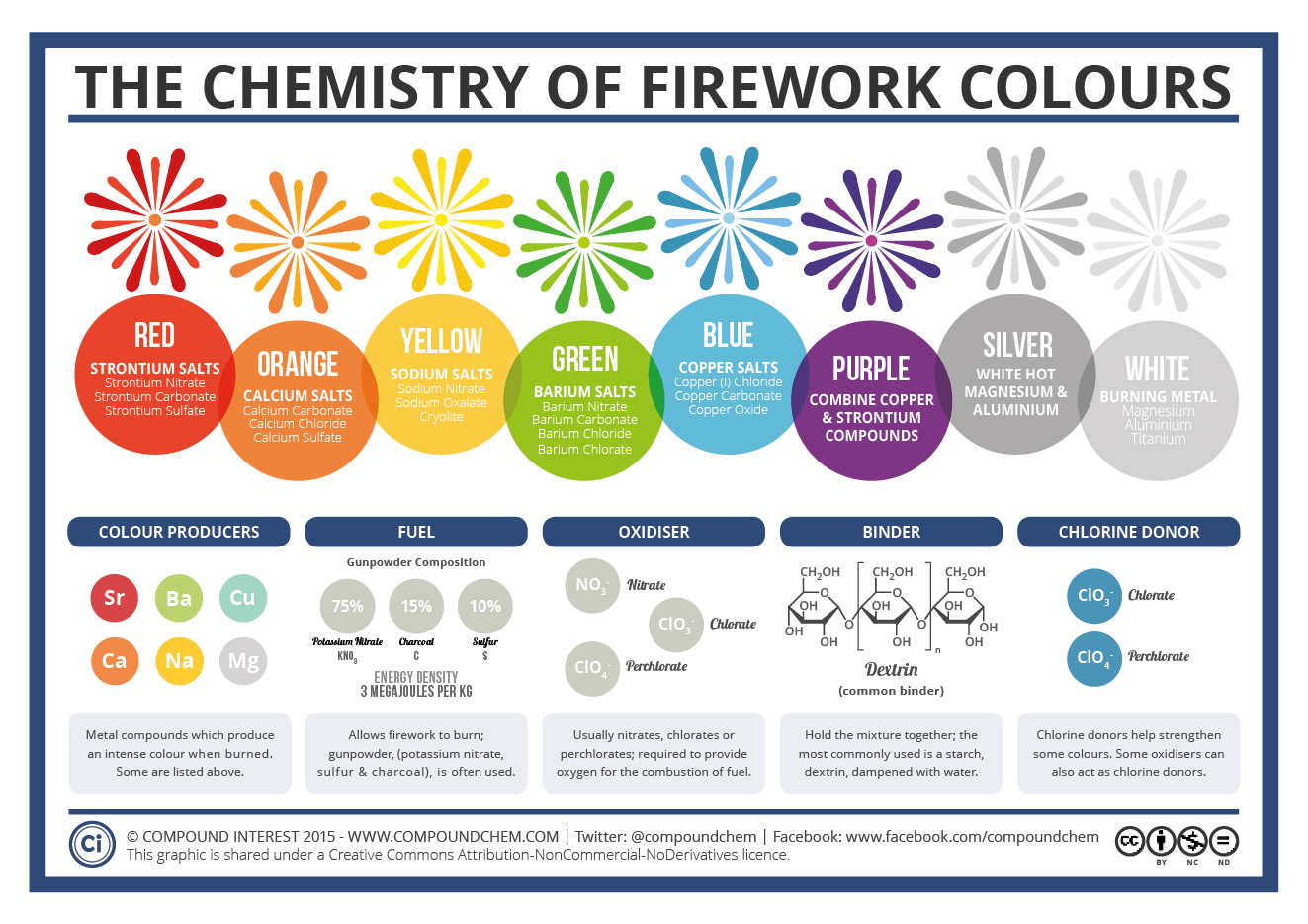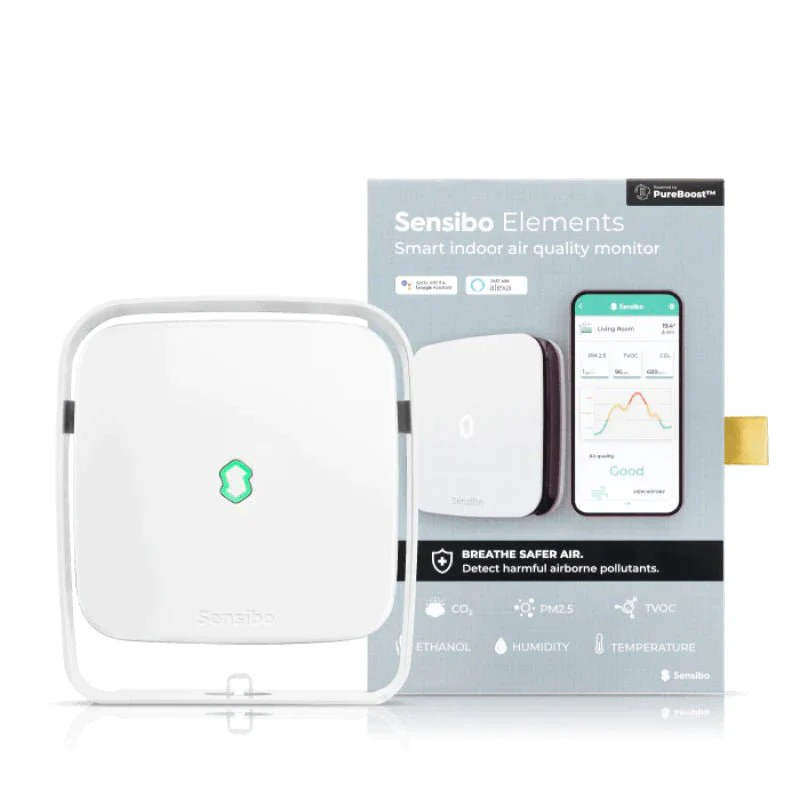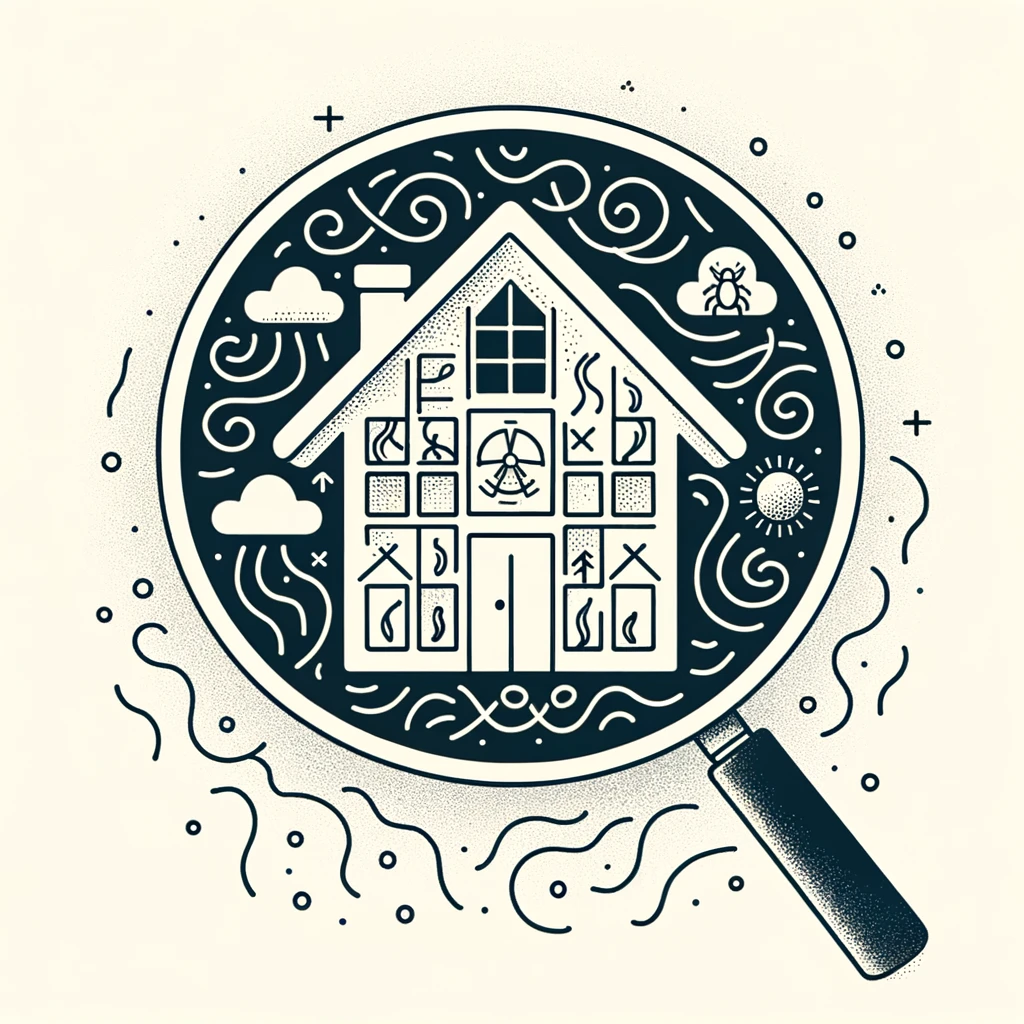In 2021, Americans spent approximately $1.5 billion on fireworks despite an increase in prices. In fact, news outlets predicted a shortage of fireworks halfway through the year based on supply and demand from the previous year. And contrary to popular belief, pyrotechnics are not solely reserved for the Fourth of July. Many countries across the globe, and lots of Americans, celebrate New Year’s Eve with fireworks. They fill the night sky with dazzling colors in a variety of patterns. Unfortunately, New Year’s Eve fireworks pollution devastatingly impacts human health and the environment.
What Air Pollutants Are in Fireworks?
A firework is a combination of binders, fuels, oxidizers and coloring agents. The following diagram provides a breakdown of these components. Note that some fireworks may have additional components.
Fireworks emit a plethora of various air pollutants as a result of the chemical reactions that occur when the components are combined. Gaseous air pollutants include carbon dioxide, sulfur dioxide, carbon monoxide, nitrogen oxides and ozone.
While each of these air pollutants is hazardous in its own right, perhaps the most dangerous air pollutant emitted by fireworks is particulate matter. Particulate matter, also known as particle pollution, consists of coarse (PM10) or fine (PM2.5) particles that are a complex mixture of solids and liquids.
Let’s take a closer look at the harmful effects of fireworks with regard to outdoor and indoor air quality in both the short and long term.
What Are the Harmful Effects of Fireworks?
Whether indoors or outdoors, the chemical reactions produced by fireworks linger in the air, endangering human health and the environment. Inhaling gaseous air pollutants such as carbon monoxide may cause dizziness, confusion and headaches among other symptoms. Inhaling particulate matter may cause decreased lung function and premature death. Of course, the concentration and length of exposure determine the severity of symptoms.
With regard to the environment, air pollution created by fireworks can become trapped in the atmosphere when the weather is cold—as it is around New Year’s Eve. This is due to a phenomenon called temperature inversion. It’s also an important distinction between summertime fireworks and wintertime cold weather firework shows.
Moreover, air pollutants such as particulate matter create haze impacting visibility. Bodies of water may become acidic and acid rain effects can increase after firework displays. Fireworks air pollution can damage forests and crops and disturb ecosystem diversity.
How Homeowners Can Protect IAQ on NYE
Natural ventilation provides an influx of fresh, crisp air from the outdoors. This method of ventilation is helpful when you want to air out your home. That is, assuming the weather and temperature outdoors are comfortable and the sky is clear. However, on New Year’s Eve, natural ventilation can quickly reduce your home’s indoor air quality. Open windows and doors allow outdoor air pollutants to find their way inside the home, reducing air quality as they circulate in the space.
Night-Of Consideraitons
Prior to New Year’s Eve, ensure that your HVAC system is equipped with the right air filter. For most homeowners, we recommend high-efficiency pleated media air filters with a MERV rating of 11 or higher. Air filters with a high MERV rating are better able to capture smaller particles and more efficiently remove a variety of air pollutants.
Consider investing in a portable air purifier that utilizes HEPA filtration and produces little to no byproduct ozone. HEPA filtration is extremely powerful, capturing 99.97% of all particles between 0.3 and 10 microns. For reference, this includes dust, pollen, mold and bacteria. Due to the fact that portable air purifiers can only purify one room or area at a time, we recommend you place the unit in the most populated area of the home.
Long-Term Solutions
Alternatively, a whole-home air purifier is preferable to a portable air purifier as it purifies the entire home at once. This device actively targets indoor air pollutants, eliminating them efficiently and effectively. With a whole-home purification solution, indoor air pollution is prevented before it becomes unmanageable. This is the kind of ideal long-term solution that makes New Year’s Eve any other night when it comes to air quality.
Mechanical ventilation is also an excellent long-term option and the ideal alternative to natural ventilation. Energy recovery ventilators (ERVs) and heat recovery ventilators (HRVs) bring fresh filtered outdoor air into the home without allowing outdoor air pollutants. That means your home’s indoor air quality is not dependent on outdoor air quality. The air is then conditioned and circulated throughout the house, while also exhausting stale indoor air. The best part is that mechanical ventilation systems also help conserve system energy.
Fireworks Are Here To Stay
Pyrotechnics are nearly impossible to avoid on a holiday as popular as New Year’s Eve. However, that does not mean that your home’s indoor air quality should suffer as a result. In order to minimize the effects of New Year’s Eve fireworks pollution, we urge homeowners to implement the aforementioned IAQ tips and tricks. Remember, reducing the short-term effects of pollution exposure and protecting indoor air quality the night of is equally as important as reducing the long-term effects and ensuring healthy indoor air year-round.






